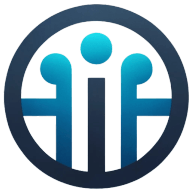In the dynamic world of IT, project management methodologies serve as the backbone of successful project execution. These methodologies provide a structured approach, enabling teams to manage projects effectively and deliver high-quality results. This blog post will delve into the best IT project management methodologies, offering insights into their unique features, benefits, and suitability for different types of projects.
Understanding IT Project Management Methodologies
IT project management methodologies are systematic approaches that guide the planning, execution, and completion of IT projects. They encompass a set of principles, practices, and processes that help teams navigate through the complexities of IT projects.
Different methodologies cater to different project needs. Some methodologies focus on speed and agility, while others prioritize meticulous planning and control. The choice of methodology can significantly impact the project's success, making it crucial to understand the nuances of each methodology.
One of the most widely adopted methodologies is Agile. Agile emphasizes flexibility, customer collaboration, and frequent delivery of functional software. It allows teams to adapt to changes quickly and deliver value to customers continuously.
Scrum, a subset of Agile, is another popular methodology. It breaks down complex projects into manageable 'sprints', enabling teams to focus on a small set of tasks at a time. Regular meetings, known as 'scrums', help teams stay aligned and address issues promptly.
Exploring the Agile Methodology
Agile, as a methodology, is synonymous with adaptability and customer-centricity. It emerged as a response to traditional methodologies that often resulted in over-budget projects and dissatisfied customers. Agile focuses on delivering working software frequently, with a preference for shorter timescales.
In Agile, requirements and solutions evolve through collaborative efforts. It encourages face-to-face communication and reflects on how to become more effective, adjusting behaviors accordingly.
Agile is best suited for projects where requirements are expected to change frequently. It allows for rapid adjustments and promotes a culture of continuous improvement. However, Agile requires a high level of customer involvement and may not be suitable for all projects.
Diving into the Scrum Framework
Scrum, a specific Agile framework, is designed to manage complex software and product development. It uses iterative and incremental practices to optimize predictability and control risk.
Scrum involves a series of 'sprints', each lasting for a fixed duration, typically two weeks to a month. Each sprint starts with a planning meeting, where the team decides on the tasks to be completed. Daily scrum meetings help the team stay on track and address any roadblocks.
Scrum promotes transparency, inspection, and adaptation. It empowers teams to self-organize and make decisions collectively. However, Scrum requires a high level of discipline and commitment from the team and may not be suitable for loosely structured teams.
The Waterfall Model: A Traditional Approach
The Waterfall model is a linear, sequential approach to project management. It involves a series of phases, each dependent on the deliverables of the previous one. The phases include requirements gathering, design, implementation, verification, and maintenance.
The Waterfall model provides a clear structure and easy-to-understand stages. It is best suited for projects with well-defined requirements and no anticipated changes. However, its rigid structure does not allow for changes once a phase is completed, making it less suitable for projects with evolving requirements.
The Lean Methodology: Maximizing Value and Minimizing Waste
The Lean methodology aims to maximize customer value while minimizing waste. It focuses on improving efficiency and eliminating non-value-adding activities.
Lean involves a set of principles, such as defining value from the customer's perspective, identifying the value stream, creating flow, establishing pull, and pursuing perfection. It encourages continuous improvement and respect for people.
Lean is best suited for projects aiming to improve processes and reduce waste. However, it requires a cultural shift and a commitment to continuous improvement, which may be challenging for some organizations.
The Kanban Method: Visualizing Work and Limiting Work in Progress
Kanban is a visual system for managing work as it moves through a process. It helps visualize both the process and the actual work passing through that process. The goal of Kanban is to identify potential bottlenecks in your process and fix them so work can flow through it cost-effectively at an optimal speed or throughput.
Kanban uses a board and cards to represent work items and their status. It limits the amount of work in progress, which helps reduce waste from multitasking and context switching, expose operational problems and stimulate collaboration to improve the system.
Kanban is best suited for projects with a continuous workflow, such as support or maintenance projects. It provides transparency and allows teams to manage their work more effectively.
Wrapping Up: Choosing the Right IT Project Management Methodology
IT project management methodologies offer structured approaches to managing complex projects. The choice of methodology depends on the project's nature and requirements. Agile and Scrum are ideal for projects requiring flexibility and customer collaboration. The Waterfall model works best for projects with well-defined requirements. Lean and Kanban focus on efficiency and continuous improvement. Understanding these methodologies can help teams choose the one that best fits their project needs, leading to successful project outcomes.

